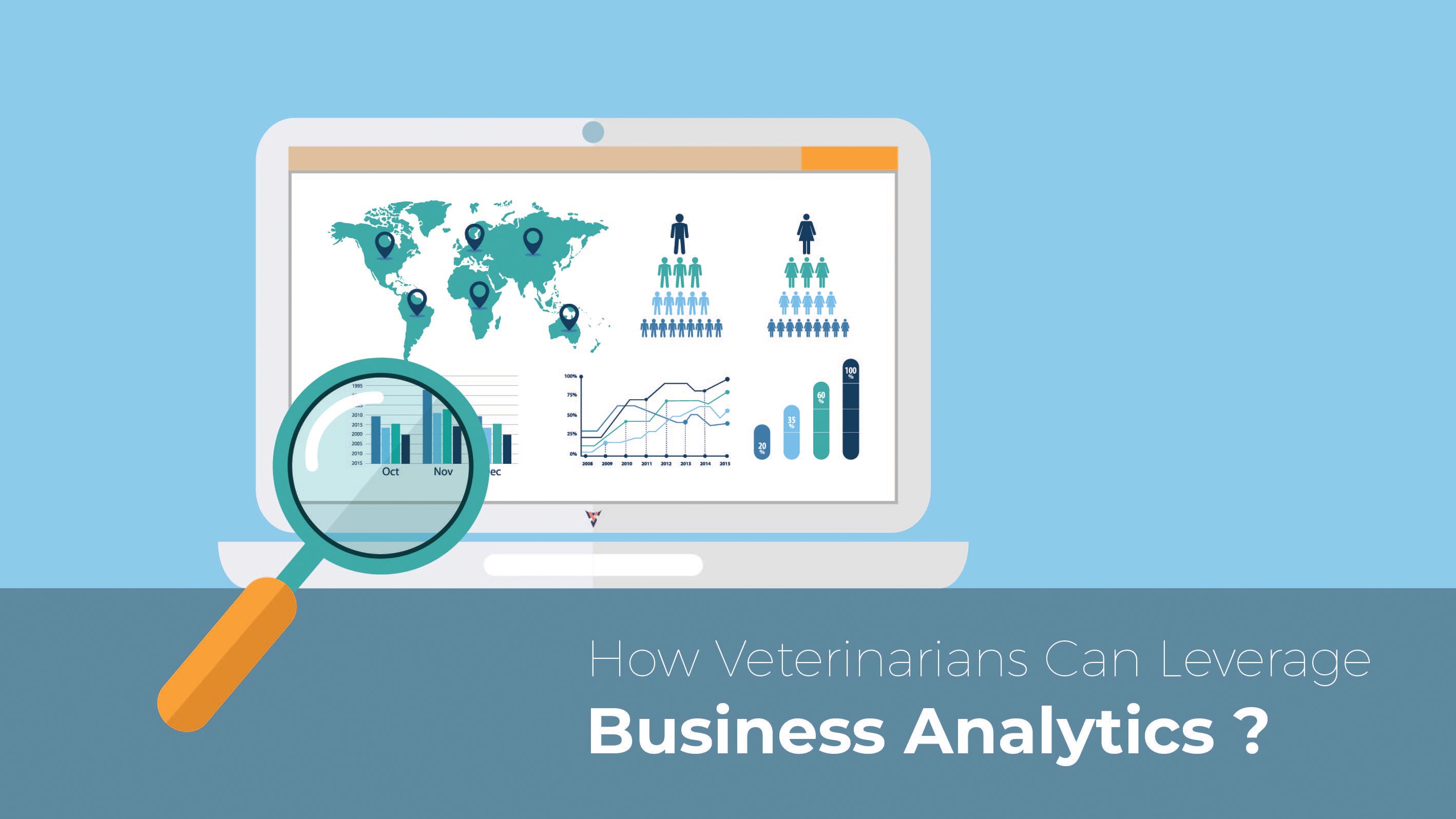
How Veterinarians Can Leverage Business Analytics
You’ve probably heard your ‘techie’ buddy or clients talk extensively about business analytics, business intelligence, and data analytics. Unless you’re a veterinarian born with a natural flair for numbers, these would never be your cup of tea. The two subjects (veterinary science and analytics) evidently lie at opposite ends of the spectrum. But, merged together, they have the power to transform your veterinary practice by leaps and bounds. Let’s explore how!
What is business analytics?
For the uninitiated and for those who find the term baffling, Business Analytics (BA), in simple words, is the methodical use of past business data, coupled with statistical techniques, to drive future business decisions. It is built into most veterinary computer programs available in the market today. For veterinarians, analytics helps you gain insights into many aspects of your practice such as productivity, billing, growth, awareness, communication, no-show rates, and so on. By using this data, you are able to assess how well (or poorly) your clinic is functioning and what you could do to improve its performance. Business Analytics also reveals past trends so that you can be better prepared for a similar occurrence in the future.
Key areas in which analytics helps veterinarians

1. Clinic operations
Business analytics helps you benchmark the performance of your clinic or hospital against practices of similar size. Analyzing data on number of patients, average bill amount, number of new clients onboarded etc. helps determine the areas that need improvement. For instance, if you’ve barely had new admissions over a given period of time, it could well indicate that you need to ramp up marketing initiatives to make your practice more visible to people.
For veterinarians, analytics helps you gain insights into many aspects of your practice such as productivity, billing, growth, awareness, communication, no-show rates, and so on. By using this data, you are able to assess how well (or poorly) your clinic is functioning and what you could do to improve its performance.
2. Client retention
Serving existing clients and patients with utmost care is as important as scouting for new ones. By employing data analytics features built into your veterinary software , you will be able to determine how well you retain clients. A 90% retention rate is a good indicator. Staying in regular touch with clients through newsletters, loyalty programs, messages, and friendly reminders are good ways to get your clients to come back to you.
3. Fees and budgets
You incur many different expenses in a veterinary practice and it is important to set time-bound budgets to ensure that you don’t overshoot set limits. Using business analytics helps you keep a track on expenses and assess deviations when they occur. The tool also helps you determine appropriate fee amounts that will keep your revenues healthy.
4. Inventory planning
Analytics is extremely helpful in planning the inventory for medicines, supplies, and other goods that are essential to your practice. Keeping a tab on inventory levels and analyzing consumption patterns over time helps in keeping supplies well-stocked and in placing orders for essentials in a timely basis. Trends discovered through data analytics, such as increased rates of vaccination during certain months, can help your practice stay prepared for the occurrence in the next cycle.
VETport’s offering in Business Analytics
VETport’s veterinary practice management software is designed to help veterinarians gain insight into key aspects of their practice. The portal offers vital ‘Statistics and Reports’ under the following categories.
- Accounting: The module generates reports on invoice, debits, credits, cash depots, sales tax, refunds, and returns. Especially useful are the snapshots it gives on the average invoice, invoice by plan item, and discount/coupons.
- Communication: Reports and statistics on communication help you determine how well-connected your veterinary practice is with clients. The module gives details on SMS/text message log, fax long, email logs, and postcard logs.
- Financial: A comprehensive module, ‘Financial’ throws light on cash flow, client financial metrics, provider production, revenue, and sales. The financial snapshot gives you a quick look at the financial health of your practice. Reports on top billed clients by zip code and sales by species help you focus on marketing your practice to a specific geolocation or one that has a higher density of a given kind of animal/pet. Productivity analysis helps compare the performance of different veterinarians in a multi-practitioner clinic.
- Marketing: Referral clinics, referral clinic providers, and different kinds of queries (on client, patient, plan items etc.) make up the marketing module. Such reports shed light on referral practice and its benefits to your clinic.
- Miscellaneous: This module gives details on client/patient information, appointment statuses (missed, completed, pending), task lists, rabies tag, and vaccination history. An investigation of causes of missed appointments helps reduce the number of no-shows through reminders and incentives. Vaccination history and trends help analyze the kind of pets that consume the service most, and help you plan suitable marketing activities to owners of similar pets.
Ready to unleash the power data analytics on your veterinary practice? Give VETport a try.
To know more about how to use ‘Reports and Statistics’, write to us - sales@vetport.com

